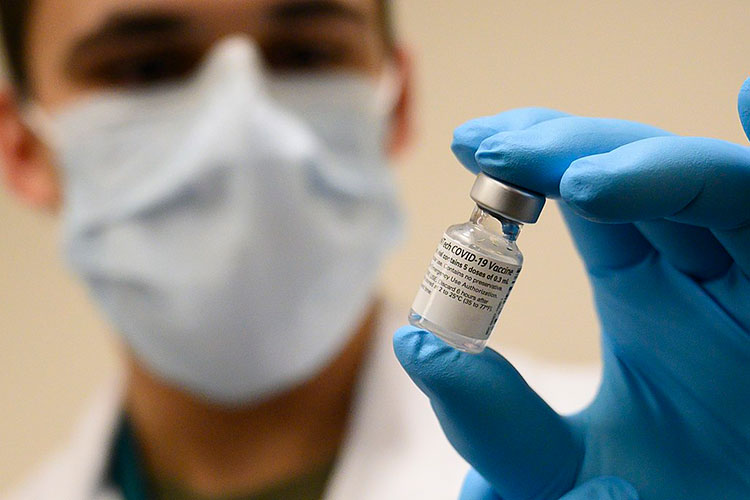Campus public health leaders ‘extremely confident’ in COVID-19 vaccines
Despite the rocky initial rollout of COVID-19 vaccines in the U.S., Berkeley health experts say their safety and effectiveness offer reason to hope

January 22, 2021
The initial rollout of the COVID-19 vaccine in the U.S. has been rocky, with poor coordination among federal, state and local agencies resulting in far fewer people receiving the vaccine in the first month after approval than promised.
But the existence of a safe and effective vaccine, and the start of a new presidential administration, should give us reason to hope, agreed a panel of Berkeley public health experts at a Campus Conversations event on Friday.
The panel was held as the last of Berkeley’s first batch of 700 doses of the vaccine, which arrived last week, were distributed to front-line health care workers on campus. The campus expects another 200 vaccine doses to arrive next week.
“The good news is that science has done a remarkable job of getting us two, and soon more, safe and effective COVID-19 vaccines in a remarkably short period of time without making shortcuts on the safety,” said Art Reingold, a professor of epidemiology at Berkeley. “Obviously, the challenge is that the bureaucratic complexities of getting doses into arms has been beset by problems.”
Joining Reingold at the event were John Swartzberg, clinical professor emeritus of infectious diseases and vaccinology at Berkeley; Anna Harte, medical director of Berkeley’s University Health Services; and Guy Nicolette, assistant vice chancellor of University Health Services.
In addition to the challenges posed by a bureaucratic system, vaccine distribution has also been hampered by disagreements over how to prioritize a limited number of initial doses, Reingold said. While some people, such as healthcare or other essential workers, may be more at risk of getting infected due to their occupation, others may be at higher risk of developing serious illness or complications if they are infected because they are older or have pre-existing medical conditions.
Nicolette and Harte said that they are bound by guidelines set by the University of California when choosing which members of the campus community to prioritize for vaccination, and that these guidelines are always evolving. However, they are working within those guidelines to assure that those who need it most are the first to get it. They also encourage campus community members to take advantage of other opportunities to get the vaccine, such as through their individual healthcare providers.
“While explicitly directed to give [Phase 1A vaccines] to health care workers or people working in health care settings, we were able to vaccinate custodians, drivers, staff working in the quarantine areas and people doing the testing, not just nurses and doctors and medical assistants,” Harte said. “We can work — and we do work very hard — to make sure [the distribution is] as equitable as possible.”
While the initial rollout of the vaccine may feel slow, it will likely speed up as new policies under the Biden administration go into effect and additional vaccines are approved by the FDA. Swarzberg said that there are at least six different types of COVID-19 vaccines in development right now, and a few will likely be approved for emergency use within the next few months.
However, the existence of a vaccine doesn’t mean that life will immediately return to normal. While the Moderna and Pfizer vaccines are both about 95% effective in preventing people from getting symptomatic COVID-19, scientists still don’t know how well these vaccines will prevent asymptomatic cases. That means that it may still be possible for vaccinated people to contract SARS-CoV-2 and not get sick, but still spread the virus to others.
“I may get a vaccine and look like I’m fully protected, but it’s possible that I could still, in a sense, harbor and transmit infection,” Nicolette said.
As a result, the panelists stressed the need for everyone to continue to wear face masks and distance themselves from others, even after getting the vaccine.
“I am extremely confident in this vaccine, … but we’re in this critical phase right now where we don’t want to let down our guard too soon,” Harte said. “We’re at this tipping point, really. Even if we have the vaccine, we cannot launch too fast into an assumption that infection is no longer out there.”